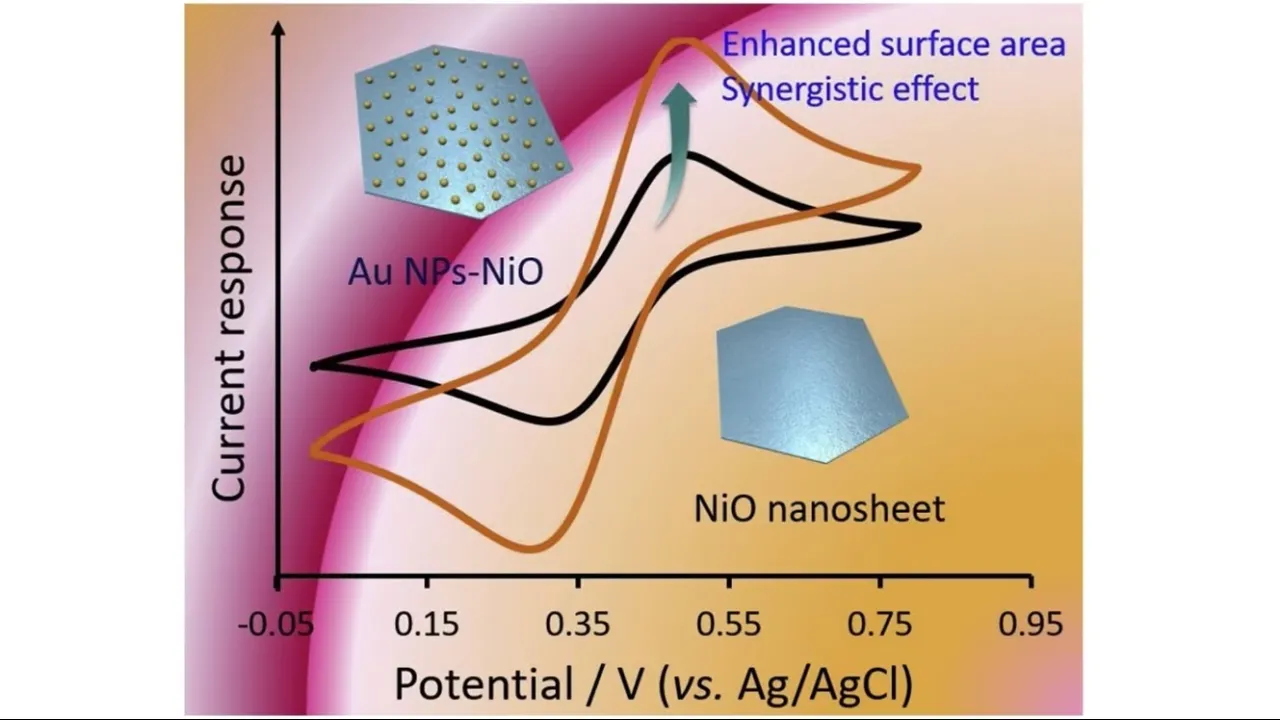
One-step Synthesis and Decoration of Nickel Oxide Nanosheets with Gold Nanoparticles by Reduction Method for Hydrazine Sensing Application
About
- Ahmed Rafiq, et al., "One-step Synthesis and Decoration of Nickel Oxide Nanosheets with Gold Nanoparticles by Reduction Method for Hydrazine Sensing Application". Sensors and Actuators B: Chemical, 286, 2019, 139.
- Morphology, nanoscale features, and tunable properties are the fundamentals of nanomaterials to many applications in use nowadays. Exciting approaches are utilized for developing and exploring new nanomaterials that enable broader impact on a variety of application areas. In this study, we synthesized thin nickel oxide (NiO) nanosheets using wet chemistry process and modified their surface with gold (Au) nanoparticles (NPs) via reduction method to obtain new hybrid (Au NPs-NiO nanosheets) nanomaterial. The morphological analysis of NiO and Au NPs-NiO nanosheets revealed small, uniform, thin, and smooth surface of NiO nanosheets formation, which become rough and decorated with small Au NPs uniformly over the NiO nanosheets surface. The synthesized NiO nanosheets and hybrid (Au NPs-NiO nanosheets) nanomaterials were further utilized to modify the glassy carbon electrode for the fabrication of electrochemical-based hydrazine sensors. The fabricated sensors were applied to detect hydrazine using cyclic voltammetry (CV). And the obtained sensing properties of the hybrid nanomaterial-based sensor were comparatively better than the only NiO nanosheets based sensors. Further, hybrid nanomaterial-based sensors characterized in detail, which showed an excellent sensitivity of 31.75 μAnM−1 cm−2. The lower detectable limit of hydrazine sensor was as low as ˜0.05 nM, which is considerably better than the other metal oxide-based hydrazine sensors. Better sensing performance of hybrid nanomaterial-based sensor likely stems from nanosheets small size, tiny thickness, and Au modification that significantly improve the surface area and lead a positive synergistic effect (an effect arises between two or more materials that produce an enhanced effect compared to their individual effects) for electrocatalytic reaction. We believe that this hybrid nanomaterial with excellent catalytic properties could be utilized as an efficient electrode material to design other chemical and biological sensors.


